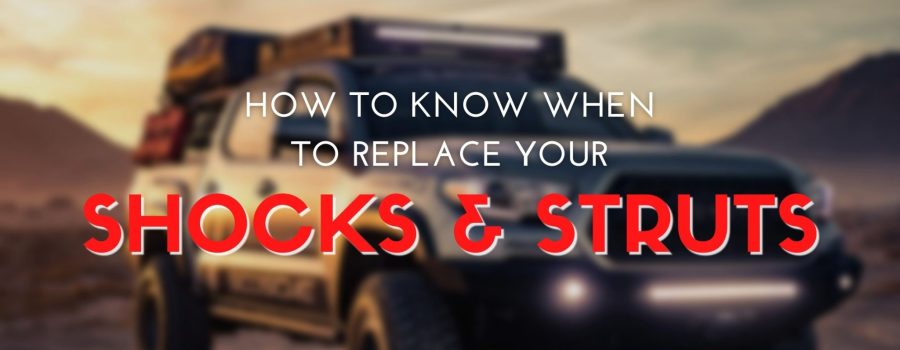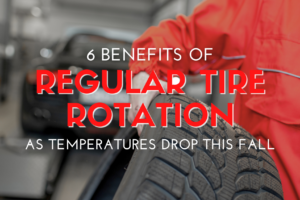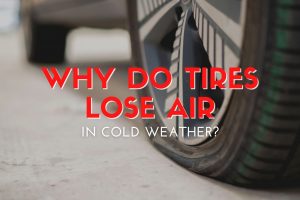How To Know When to Replace Your Shocks and Struts
Does your vehicle bounce like a basketball when you go over a speed bump or hit a rough patch in the road? Is every drive you make in your vehicle a rough one? Then it’s likely time to inspect your vehicle’s suspension system and consider replacing your shocks and/or struts.
What Do Shocks & Struts Do?
Shocks and struts are a vital part of your vehicle’s suspension system. They work with the other components in your suspension system to ensure a stable, comfortable ride.
Shocks and struts help your tires maintain traction by minimizing bouncing, swaying, and other movements that prevent safe handling. They keep the weight of your car balanced and stable over bumps and through turns.
What is the difference between shocks and struts?
Shocks and struts are often referred to interchangeably, but there are some major differences between them. If your vehicle needs struts, you cannot substitute shocks (and vice versa).
Shocks are individual components of the suspension that help the coil springs absorb the impact of the road. Without shocks, the vehicle would bounce out of control! They help keep the tires in contact with the road instead of bouncing up in the air after a bump.
A strut combines the shock absorber and coil spring components into a single unit. In addition to absorbing bumps and jolts, struts also provide structural support. They take the place of the upper control arm and upper ball joint that are required in conventional suspensions.
Does my vehicle have shocks or struts?
Each wheel will either have a strut or a shock. They come in pairs; if you have a shock on the rear left wheel, you will also have a shock on the rear right wheel. However, your vehicle may have shocks on one axle and struts on the other axle.
In fact, most modern vehicles have struts on the front axle and shocks on the rear axle. You might have struts on both axles, but it is rare to have only shocks.
There are 3 easy ways to figure out whether your vehicle has shocks or struts.
- Check your owner’s manual. The owner’s manual should include information about your specific model’s suspension setup.
- Look under the car. As long as you know what you’re looking for, you should be able to see whether your vehicle has shocks or struts connected to each wheel.
- Ask a technician. Ask your technician during your next vehicle service! They’ll be able to determine which component(s) your vehicle has and—bonus!—they can also let you know if the shocks/struts need to be replaced soon.
4 Signs That You Need to Replace Shocks & Struts
Generally, shocks and struts wear out every 50,000-100,000 miles. If you’re a more aggressive driver and/or frequently drive on rough roads, they will wear out faster.
Shocks and struts don’t go out all at once; they deteriorate slowly over time. Because of this, you may not notice that your suspension is going bad until things go from bad to worse! Watch out for these 4 main signs that you need to replace the shocks and/or struts.
1. Bumpy, rough ride
When you hit a bump in the road, do you feel like you could lose control of the vehicle? Does your vehicle bounce more than once or twice? A rough, bumpy ride is one of the easiest symptoms to notice.
2. Leaking fluid
Leaked fluid on the exterior of the shocks/struts is a sign that something is wrong. If the shock absorbers do not have enough hydraulic fluid, they won’t be able to absorb impacts as you drive.
If you’re not sure whether the liquid on your suspension is coming from the shocks or is an old fluid leak from somewhere else, wipe it off and then check it again after you’ve driven at least a few miles.
3. Uneven treadwear
Cupping—scalloped, wavy dips on the tire tread—is a tell-tale sign of worn shocks and struts. It is caused by the tires not being held firmly to the road as you drive. Cupping shortens the usable life of your tires and diminishes handling and stopping power.
4. Instability when braking or turning
Does your car nosedive when you hit the brakes? Or sway on turns? This means that your shocks and struts aren’t able to handle the changes to the vehicle’s weight distribution. It may also take longer to stop when your suspension is bad, which is never a good thing.
Replacing your shocks and struts when they are worn down will prevent damage to other vehicle components like the tires and suspension, and it is also critical for driving safety!
Today’s vehicles have an array of safety systems designed to help improve handling and stability and prevent accidents. The anti-lock brakes, stability control system, traction control system, automated braking and other features work together to keep you safe. If your shocks and struts are in poor condition, they may not respond properly to these systems’ electronic signals in an emergency.
Getting Your Shocks & Struts Replaced
The best way to know when to replace your shocks and struts is to have a qualified technician inspect your suspension anytime you notice the above signs, get an alignment or install new tires. At the very least, get your car suspension checked once a year.
Shocks and struts should always be replaced in pairs (front axle or rear axle), and it’s even better to replace the shocks/struts on all four wheels at one time. This helps maintain reliable handling and a consistent response on both sides of the vehicle.
After you get any suspension work done, we always recommend getting an alignment too. Any changes in your suspension may also change the vehicle’s wheel alignment. And when it comes to wheel alignment, even minor tweaks can have costly consequences down the road (accelerated tire wear, more suspension problems, difficult handling).
Whether you just need your suspension inspected or you know it’s time for new shocks and struts, bring your vehicle to Postle Tire Barn for reliable, trustworthy service at competitive prices!
Contact Us
Postle Tire Barn has served the automotive needs of West Alabama for more than 40 years. We are located in Tuscaloosa on Jug Factory Road behind McDonalds. You can reach us by email at [email protected] or give us a call at 205-391-0062. And remember: Postle Tire Barn: Great Prices and NO BULL!





Recent Comments